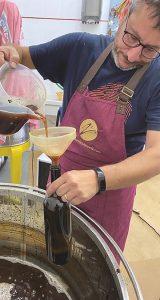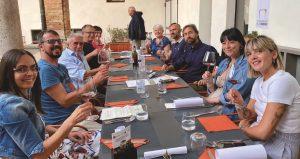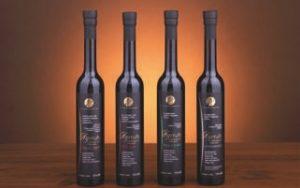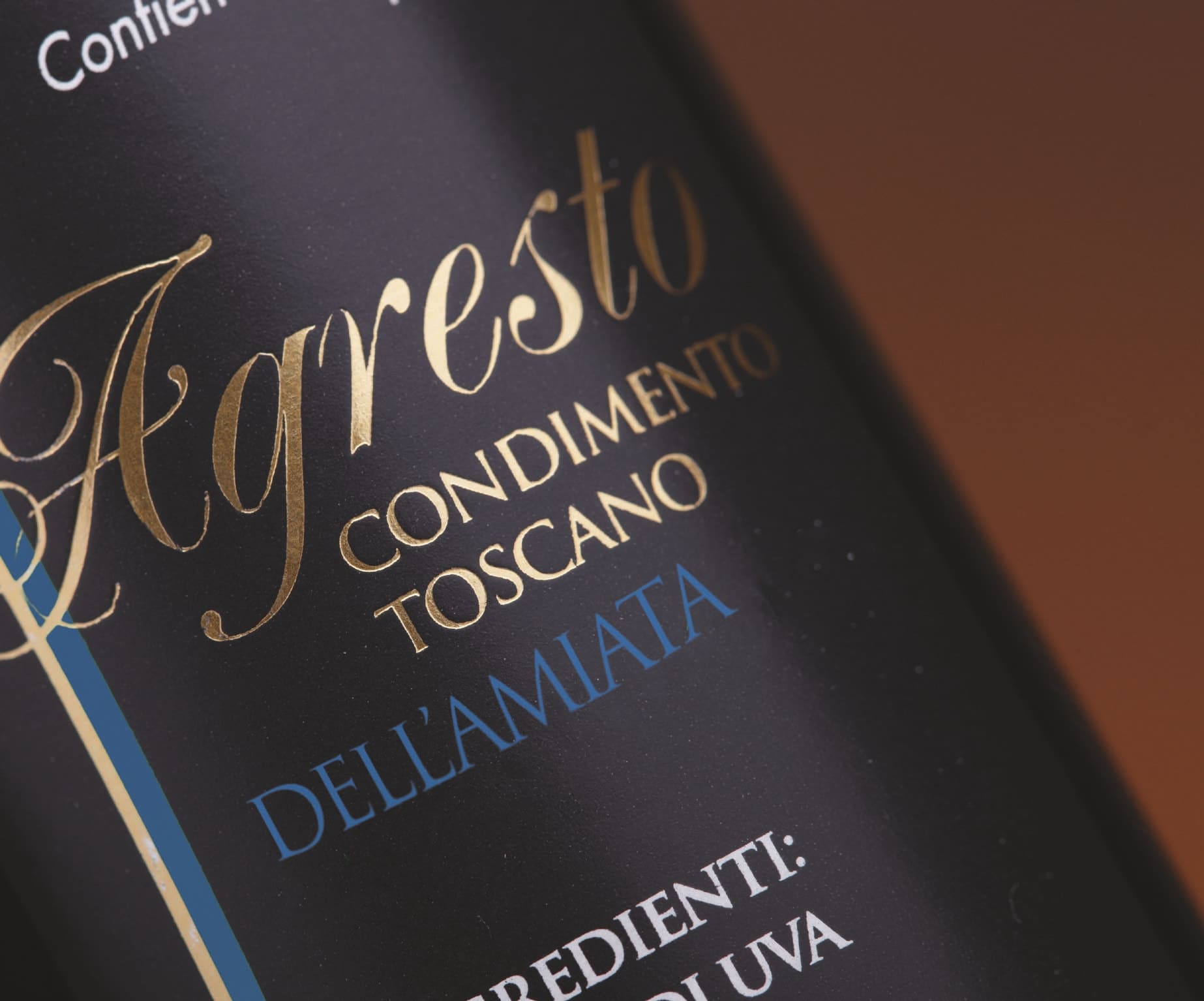Di Jori Diego Cherubini

Agresto dell’Amiata is a reinterpretation of an ancient condiment obtained from immature grapes, the result of the collaboration of companies and research bodies of the project of the Tuscany Region AGRNO (A Group to Rediscover Economies and New Opportunities) Operative Group (GOPEI AGRI).
 The grapes harvested in the pre or early veraison phase are pressed, cooked and then cold flavored with a blend of herbs from the Amiata area including: juniper berries (Juniperus communis), chives (Allium schoenoprasum), carline roots (Carlina acaulis), wild garlic (Allium ursinum) and white onion (Allium cepa). The purpose is to enhance a mountain on whose slopes grapes have always been grown through which great wines will be obtained, and – at higher altitudes – aromatic herbs that grow abundantly and characterize the territory for its wealth of endemic specimens, making dell’Amiata, as Father Ernesto Balducci said, a “precious casket”.
The grapes harvested in the pre or early veraison phase are pressed, cooked and then cold flavored with a blend of herbs from the Amiata area including: juniper berries (Juniperus communis), chives (Allium schoenoprasum), carline roots (Carlina acaulis), wild garlic (Allium ursinum) and white onion (Allium cepa). The purpose is to enhance a mountain on whose slopes grapes have always been grown through which great wines will be obtained, and – at higher altitudes – aromatic herbs that grow abundantly and characterize the territory for its wealth of endemic specimens, making dell’Amiata, as Father Ernesto Balducci said, a “precious casket”.
 Agrest has a great history. Appreciated by the Romans as an omphacium, mentioned by Dioscorides and Pliny (D. VERGARI – «Agresto a rediscovered condiment» page 14), it reached the Arab world where it is an ingredient of the Ibrahimiyya, mentioned
Agrest has a great history. Appreciated by the Romans as an omphacium, mentioned by Dioscorides and Pliny (D. VERGARI – «Agresto a rediscovered condiment» page 14), it reached the Arab world where it is an ingredient of the Ibrahimiyya, mentioned
in an ancient recipe book (M. CASARI – «Il Cuoco di Bagdad» pag. 9), and was widespread in France as Verjus. In Italy the condiment was celebrated during the Renaissance, through recipes and descriptions by the cooks of the Italian courts of the time. In Tuscany the diffusion of Agrest is widely documented and perhaps the most celebratory testimony is that in the fifteenth century of Father Agostino del Riccio who in his treatise «Experimental agriculture» says «it is common for everyone to talk about how Agrest is made in Tuscany” The peculiarity of Tuscan Agresto concerns the flavoring with aromatic herbs and fruits, not present in other territories. Tuscan Agresto, herbal and historic liqueurs are among the products of LOMBARDI & VISCONTI.
The production of Agresto takes place in the summer , from late July to mid-August. The grapes must be unripe, to express their tartness, therefore they are harvested before they change color, squeezed in a “soft” way, and cooked to allow evaporation which will bring the final volume to a third Agrest is a liquid condiment, and the Tuscan tradition provides, in addition to the reduction of heat, the flavoring with aromatic herbs, spices and sometimes fruit. An important phase concerns the filtration, carried out in successive passages through fabric filters with more or fewer meshes less dense, but never too tight, to avoid flattening the flavor of the product.

The researches – conducted by the CNRIBBA (Institute of Agricultural Biology and Biotechnology of the CNR) and by the DiSAAA (Department of Agricultural, Food and Agro-environmental Sciences) of the University of Pisa – have highlighted Agresto characteristics suitable for considering it a functional food to counteract the radicals free and fight cell aging, which leads to the development of various pathologies; in addition to having undoubted antibacterial properties, reducing the growth of microorganisms responsible for food-borne infections. On the basis of these studies, the “Qualitierbe” company of Pitigliano has created a line of cosmetics in Agresto. To produce Agresto, the grapes from the summer thinning are used which, instead of being left on the ground where they can cause the development of negative microorganisms for the vine, participate in the new production process with advantages also for the environment.

Aurelio VISCONTI Lombardi & Visconti SAS info@aureliovisconti.com
Giuseppe FERRONI DiSAAA-a Università di Pisa giuseppe.ferroni@unipi.it
Francesca VENTURI DiSAAA-a Università di Pisa francesca.venturi@unipi.it
Luisa POZZO CNR-IBBA SS Pisa luisa.pozzo@ibba.cnr.it
Annita TOFFANIN DiSAAA-a Università di Pisa annita.toffanin@unipi.it
